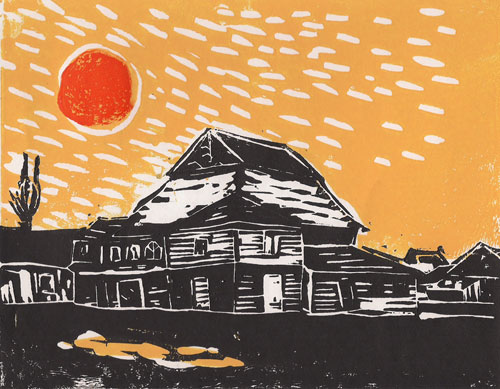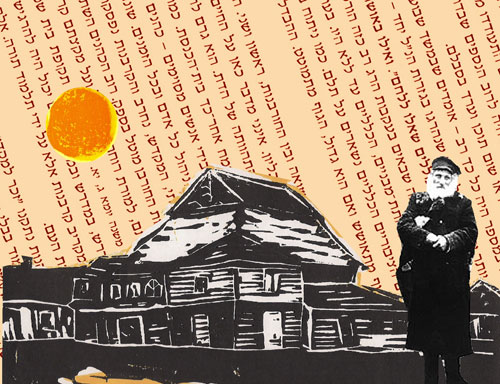Lost Treasures: The Wooden Synagogues of Eastern Europe The Artwork of Bill Farran
Kosow Lacki, Poland - Original Linocut
Kosow Lacki, Poland - Original Linocut
Yiddish name: Kosov Latski
The wooden synagogue of Kosow Lacki, a town whose majority was Jewish, was erected at the end of the 18th century. Unlike other synagogues, Kosów Lacki’s was not known for its architectural structure, nor for its interior paintings. It is remembered instead for the ironic and tragic ending of its Jewish inhabitants.
Between the two World Wars, many Jews began to leave Kosow Lacki as their situation worsened with the rise of Hitler and conflict in the area between Germans and Russians. Thus, the Jewish population dwindled to 40% of the town's population by the start of World War II. In late September 1939, the Germans occupied the town, established a Judenrat and ghetto. Jewish craftsmen became slave labor, some working to erect and enlarge nearby Treblinka from a small POW camp into a death camp.
At the end of Yom Kippur on September 22, 1942, German and Polish police circled the ghetto and, on the same day, marched its inhabitants six miles to Treblinka. They were the only victims to arrive on foot to this death camp.
Purchase a print
Original linocut prints are 8x10 inches, and are available either unmatted or in an 11x14 matte.
I also offer matted 5x7 digital prints. These prints are created from high-res digital images and come in an 8x10 matte.
For this synagogue I have created an additional digital print, with Hebrew lettering in the background. These prints are also created from high-res digital images and come in an 8x10 matte.



